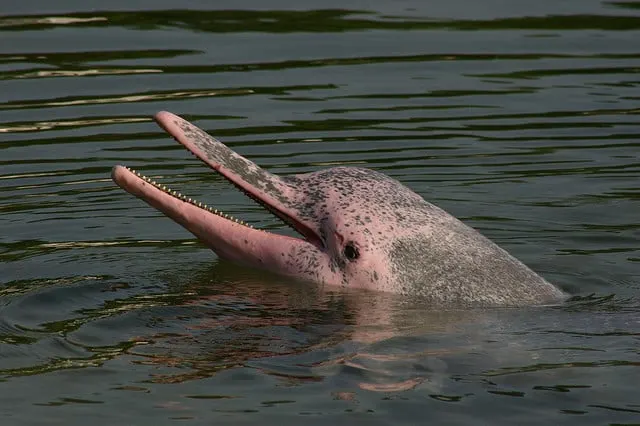In the murky waters of the Amazon Basin swims one of nature’s most extraordinary creatures – the Amazon River dolphin, also known as the pink river dolphin or boto. With their distinctive rosy hue and ancient presence in South American folklore, these remarkable aquatic mammals have captivated the imagination of locals and scientists alike for centuries. Unlike their oceanic cousins, these freshwater dolphins have adapted to the complex river systems of the Amazon, evolving unique characteristics that make them perfectly suited to navigate the flooded forests and labyrinthine waterways. From their unusual coloration to their prominent role in indigenous mythology, pink river dolphins represent one of the Amazon’s most enigmatic inhabitants, serving as both ecological indicators and cultural icons across several South American countries.
The Biological Marvel: Classification and Appearance

The Amazon river dolphin (Inia geoffrensis) belongs to the family Iniidae and is one of the few dolphin species that inhabits exclusively freshwater environments. Growing up to 8 feet (2.5 meters) in length and weighing approximately 400 pounds (180 kilograms), these dolphins are immediately recognizable by their distinctive coloration. While juveniles are typically gray, adults – particularly males – develop a pink hue that ranges from subtle blush to vibrant flamingo-pink. This coloration intensifies during periods of high activity, excitement, or social interaction, functioning similarly to human blushing. Their bodies are considerably more flexible than oceanic dolphins, with unfused neck vertebrae that allow them to turn their heads 180 degrees – a crucial adaptation for navigating through tree trunks and vegetation in flooded forests.
The Secret Behind Their Pink Coloration

The distinctive pink coloration of Amazon river dolphins has fascinated scientists and continues to be studied. Research indicates several factors contribute to their rosy appearance. The pink hue results primarily from blood vessels near the surface of their skin, similar to human blushing. Additionally, dolphins develop more pink coloration as they age, with adult males typically being the most vibrantly colored. The transparency of their skin allows blood vessels to be visible, and the coloration intensifies during physical activities or social interactions. Environmental factors also play a role – dolphins in warmer waters often display more pronounced pink tones. Interestingly, in some regions, the dolphins appear pinker due to a thin layer of algae that grows on their skin. While the biological advantage of this coloration remains partially mysterious, it may play a role in social recognition and communication among these highly intelligent creatures.
Habitat and Distribution: Masters of the Amazon Basin
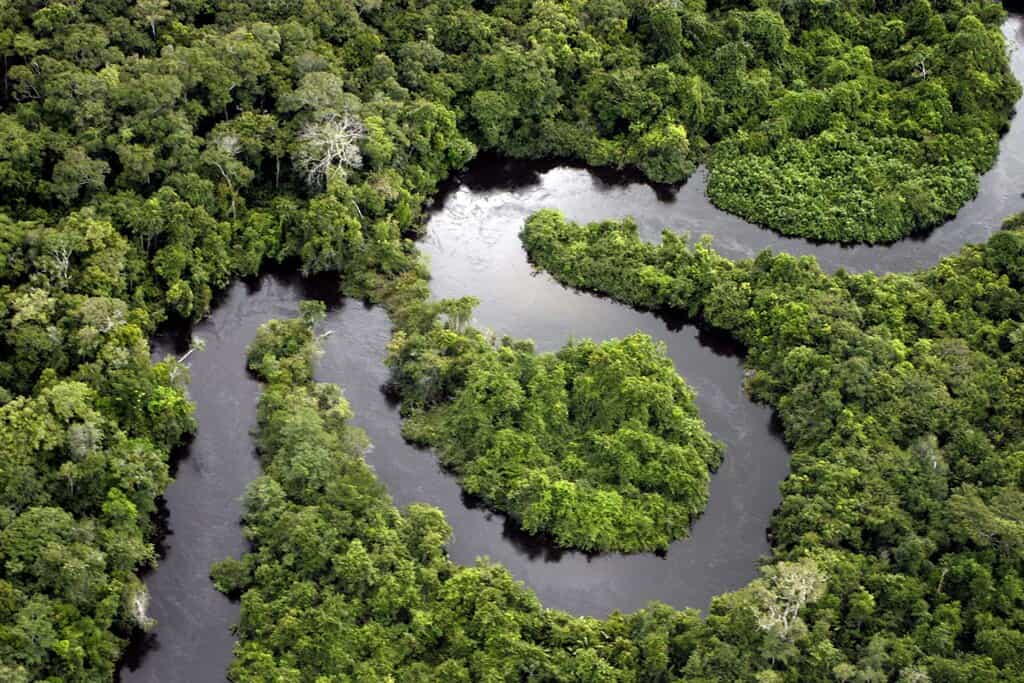
Pink river dolphins thrive throughout the Amazon and Orinoco river basins, spanning six countries: Brazil, Colombia, Ecuador, Peru, Venezuela, and Bolivia. Their habitat encompasses an area of approximately 2.7 million square miles (7 million square kilometers). These versatile mammals navigate various aquatic environments, from main river channels to small tributaries, and most notably, the seasonally flooded forests known as “várzea.” During annual flood seasons, when water levels can rise over 30 feet (9 meters), pink dolphins follow the expanding waters into previously dry forest areas, hunting fish among submerged trees and vegetation. Their remarkable adaptability to changing water conditions, including their ability to navigate in extremely shallow waters as little as 30 centimeters deep, has allowed them to exploit ecological niches unavailable to other large aquatic mammals. This habitat flexibility also means they encounter various water conditions – from clear, nutrient-poor waters to sediment-rich, muddy channels, each presenting unique hunting and navigation challenges.
Evolutionary Adaptations: Designed for River Life
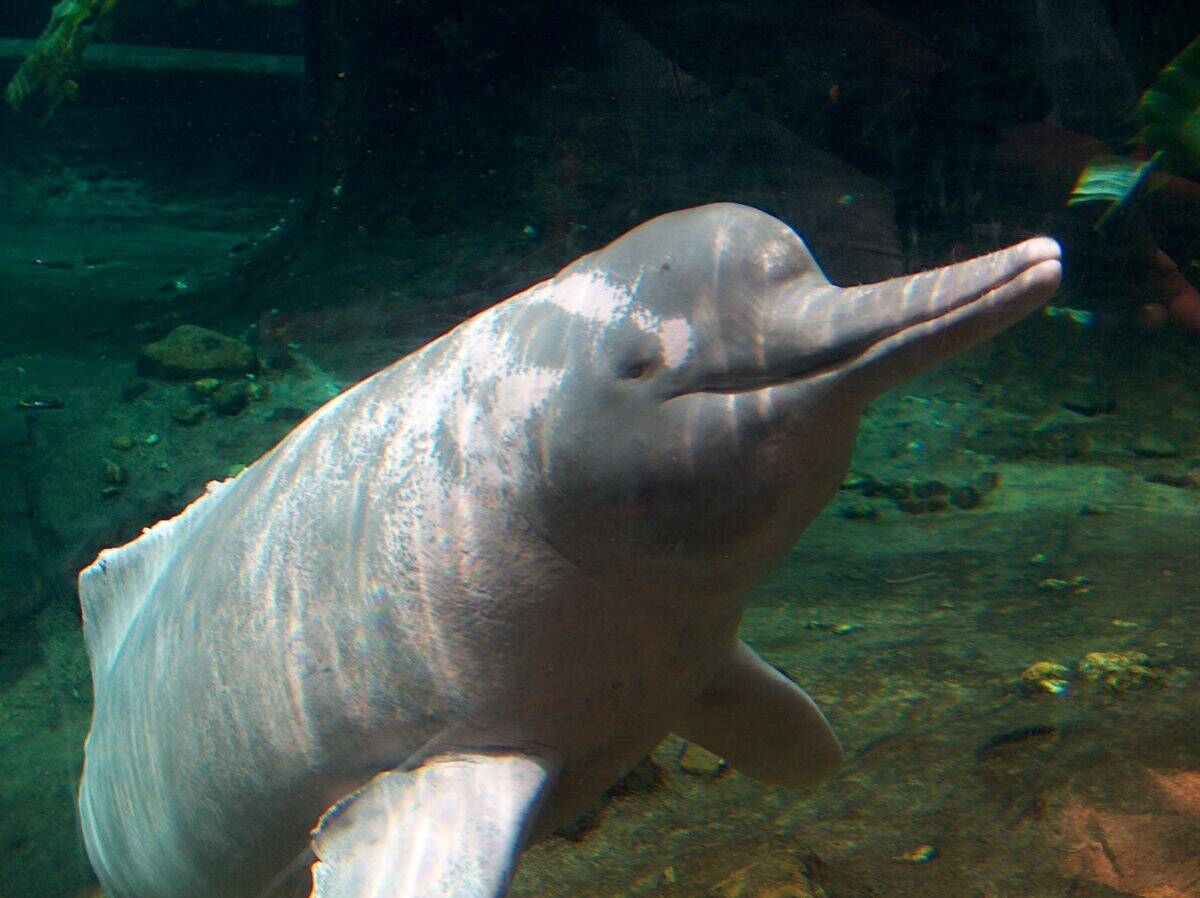
Pink river dolphins possess remarkable evolutionary adaptations that distinguish them from their oceanic relatives. Their unfused neck vertebrae grant exceptional head mobility, allowing them to maneuver between tree trunks and dense vegetation with precision. Their flippers are large and paddle-like, providing excellent navigation control in complex environments. Perhaps most distinctive is their elongated, narrow rostrum (snout) equipped with 24-34 heterodont teeth (varying in size and shape) on each side of both jaws – ideal for catching slippery prey in murky waters. Unlike ocean dolphins, they have small eyes and reduced visual acuity, compensated by highly developed echolocation abilities essential for navigating the turbid Amazon waters. Their bodies are more robust than oceanic dolphins, with a pronounced melon (the rounded region of the forehead) containing specialized fatty tissue that focuses their echolocation sounds. These evolutionary specializations represent over 30 million years of adaptation to freshwater environments, making them one of the oldest lineages of toothed whales on the planet.
Behavioral Intelligence: The Cognitive Abilities of Pink Dolphins
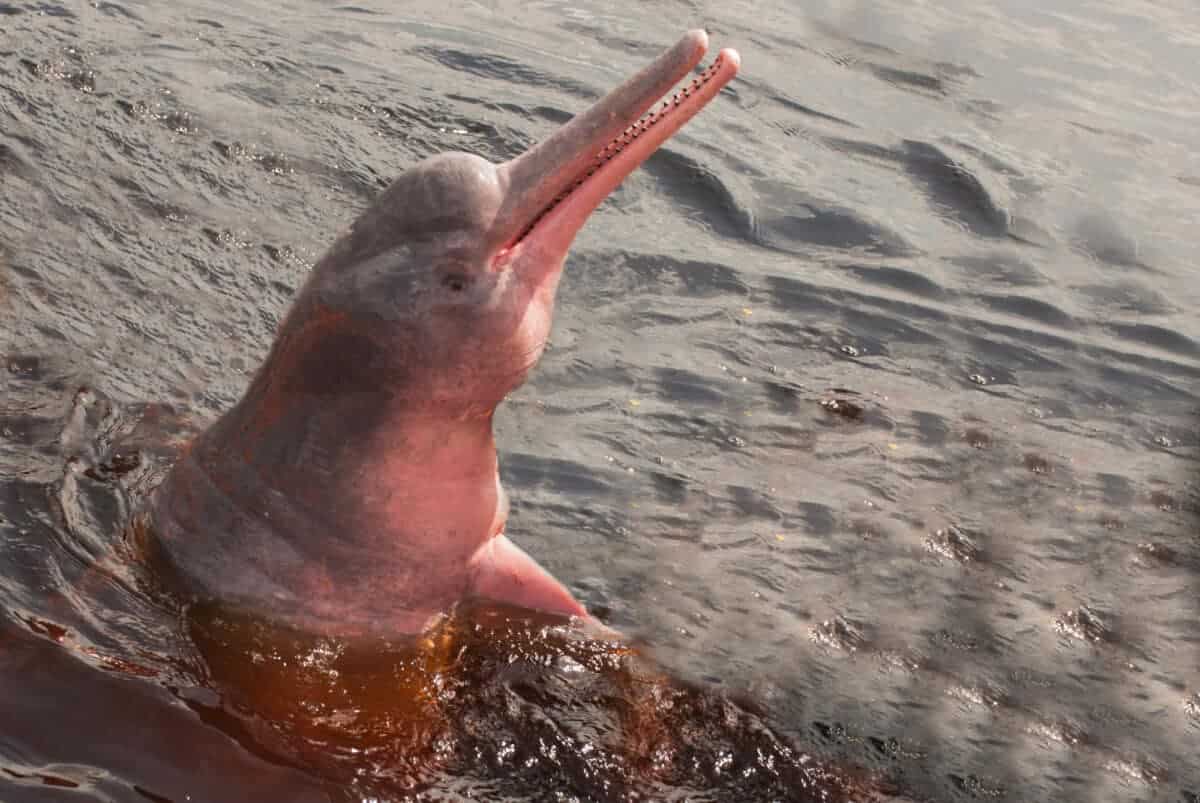
Pink river dolphins demonstrate remarkable intelligence, possessing some of the largest brain-to-body size ratios among all toothed whales. Their cognitive abilities manifest in complex social behaviors, tool use, and problem-solving capabilities. Research has documented these dolphins using branches and sticks to probe river bottoms and flush out hiding prey – a rare example of tool use among aquatic mammals. They exhibit sophisticated hunting strategies, including cooperative fishing where groups coordinate to herd fish into shallow waters. Their communication system includes a diverse repertoire of clicks, whistles, and other vocalizations that vary by geographic region, suggesting cultural transmission of knowledge. Unlike oceanic dolphin species that form large, stable pods, pink dolphins maintain a more fluid social structure, with individuals frequently joining and leaving groups – a social adaptation that may reflect the constantly changing nature of river environments. Researchers have observed that these dolphins can recognize individual humans and display curiosity toward people, often approaching boats and interacting with fishermen.
Diet and Hunting: Apex Predators of the River

As apex predators in their ecosystem, pink river dolphins have a remarkably diverse diet, consuming over 50 different species of fish. Their menu includes catfish, characins, piranhas, and river crabs, with adult dolphins consuming approximately 2.5% of their body weight daily. During the flooding season, when rivers overflow into forests, these dolphins follow, taking advantage of newly accessible hunting grounds rich with fruit-eating fish. Their hunting techniques are highly specialized – they use echolocation to detect prey hidden in murky waters and sediment, and their flexible bodies allow them to navigate flooded vegetation where many fish seek shelter. Interestingly, they’ve developed a symbiotic relationship with certain bird species, following egrets and cormorants that disturb fish while wading, making prey easier to catch. During dry seasons, when fish concentrate in shrinking water bodies, these dolphins have been observed employing communal hunting strategies, encircling schools of fish in coordinated group efforts. Their varied diet and adaptable hunting methods have been key to their evolutionary success in the nutritionally variable Amazon ecosystem.
Reproduction and Life Cycle: The Slow Maturation of River Dolphins
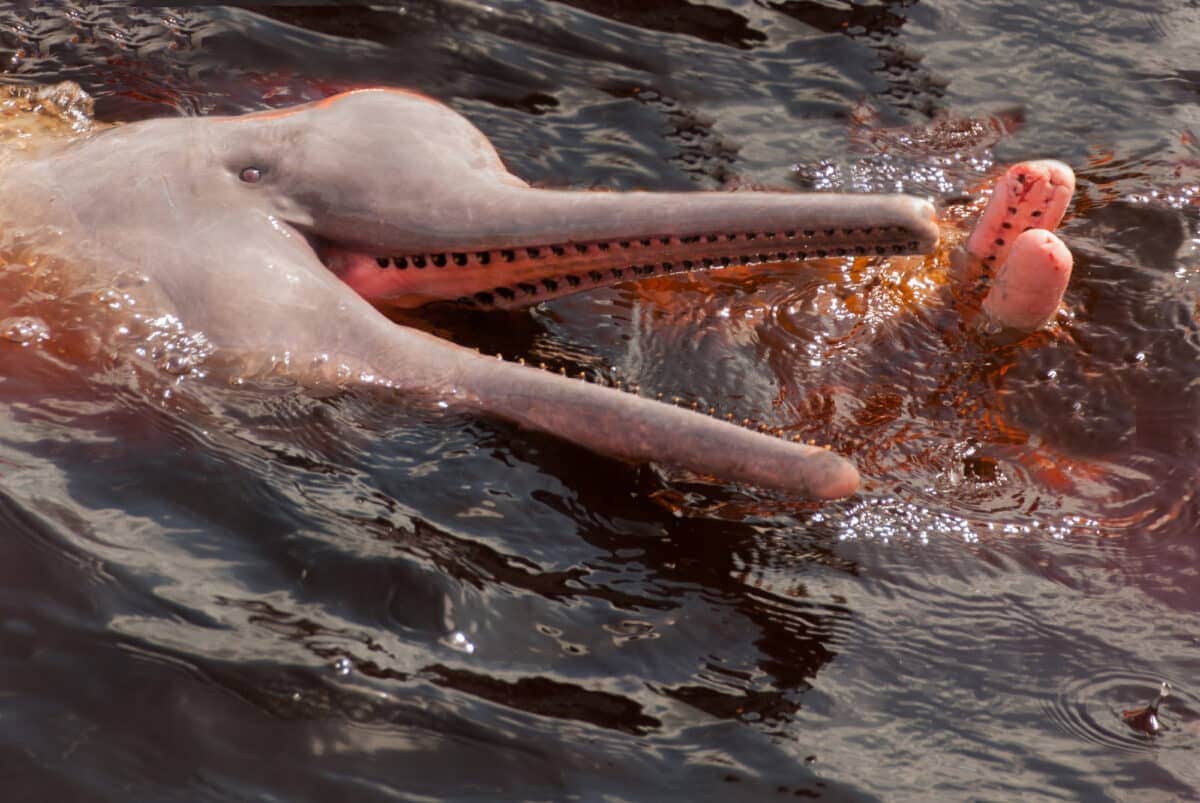
Pink river dolphins have one of the slowest reproductive rates among cetaceans, contributing to their vulnerability as a species. Females typically reach sexual maturity between 6-10 years of age and give birth to a single calf after a 11-13 month gestation period. Calves are born measuring approximately 2.5-3 feet (75-90 cm) in length and remain dependent on their mothers for up to two years, nursing on milk rich in fat that helps them develop quickly in the challenging river environment. Unlike many marine dolphins that give birth seasonally, botos can reproduce year-round, though there appears to be a slight preference for birthing during the rising water season when food resources are most abundant. The strong bond between mother and calf involves intensive training where juveniles learn complex hunting techniques, navigation skills, and social behaviors. Once separated from their mothers, young dolphins may spend several years in “adolescent” groups before fully integrating into adult society. With a potential lifespan of 30+ years in the wild, these dolphins invest significant energy in raising relatively few offspring, emphasizing quality of parental care over quantity of reproduction.
Mythological Significance: The Shapeshifting Enchanter

Few animals are as deeply embedded in Amazonian folklore as the pink river dolphin. According to widespread beliefs across indigenous cultures, these dolphins are powerful shapeshifters or “encantados” (the enchanted ones) who transform into handsome men at night to seduce women in riverside villages. These dolphin-men are typically described as wearing hats to conceal their blowholes, which cannot fully transform. The mythology includes stories of women being impregnated by botos and children born with unusual features being attributed to dolphin parentage. During traditional festivals, some communities maintain that encountering a boto brings either tremendous luck or terrible misfortune. These beliefs have historically provided protection for the species, as many communities considered hunting river dolphins taboo. The spiritual significance extends to shamanic practices, where certain tribes believe boto parts hold magical properties for love potions and medicines. While these beliefs are less prevalent today, they remain an important cultural element that highlights the profound connection between Amazonian peoples and their environment, offering insights into traditional ecological knowledge systems that have coexisted with these dolphins for millennia.
Conservation Challenges: A Species Under Threat

Despite their cultural significance and ecological importance, pink river dolphins face numerous conservation challenges. The International Union for Conservation of Nature (IUCN) classifies them as “Endangered,” with populations declining at alarming rates. Dam construction throughout the Amazon basin fragments their habitat, isolating populations and disrupting migration routes essential for genetic diversity. Mercury contamination from illegal gold mining operations poses a severe toxic threat, with studies showing high mercury levels in dolphin tissues that affect reproduction and neurological function. In some regions, dolphins are deliberately killed for use as bait in the catfish industry, with body parts either used directly as bait or rendered into oil to attract fish. Entanglement in fishing gear causes numerous accidental deaths annually, while boat traffic creates acoustic pollution that interferes with the dolphins’ echolocation and communication systems. Agricultural expansion along riverbanks leads to increased pesticide runoff, further contaminating their habitat. Climate change poses additional threats through altered rainfall patterns that disrupt flood cycles critical to their feeding and breeding behaviors. Conservation efforts face challenges due to the remote nature of much of their habitat and the transboundary nature of their range, requiring coordinated protection measures across multiple countries.
Research Breakthroughs: Modern Science Meets Ancient Mystery

Scientific understanding of pink river dolphins has advanced significantly in recent decades through innovative research approaches. Satellite tracking studies have revealed previously unknown migration patterns, showing that individual dolphins can travel over 300 miles (480 km) annually, challenging earlier assumptions about their territorial limitations. DNA analysis has identified three distinct subspecies of Inia geoffrensis, each adapted to different river systems, with potential implications for conservation strategies. Passive acoustic monitoring techniques using underwater microphones have documented complex vocalization patterns that vary between populations, suggesting a form of regional “dialect” among dolphin communities. Cutting-edge toxicology studies are examining how these top predators serve as bioindicators of ecosystem health, with their tissues revealing accumulated pollution levels throughout the food chain. Drone technology has revolutionized population surveys, providing more accurate counts in areas previously difficult to access. Perhaps most fascinating is research into their cognitive abilities, with studies demonstrating problem-solving skills comparable to those of great apes and advanced tool use that ranks among the most sophisticated in non-primate species. These scientific advances not only enhance our understanding of these remarkable creatures but also inform protection efforts for this endangered species.
Tourism Impact: Double-Edged Sword for Conservation
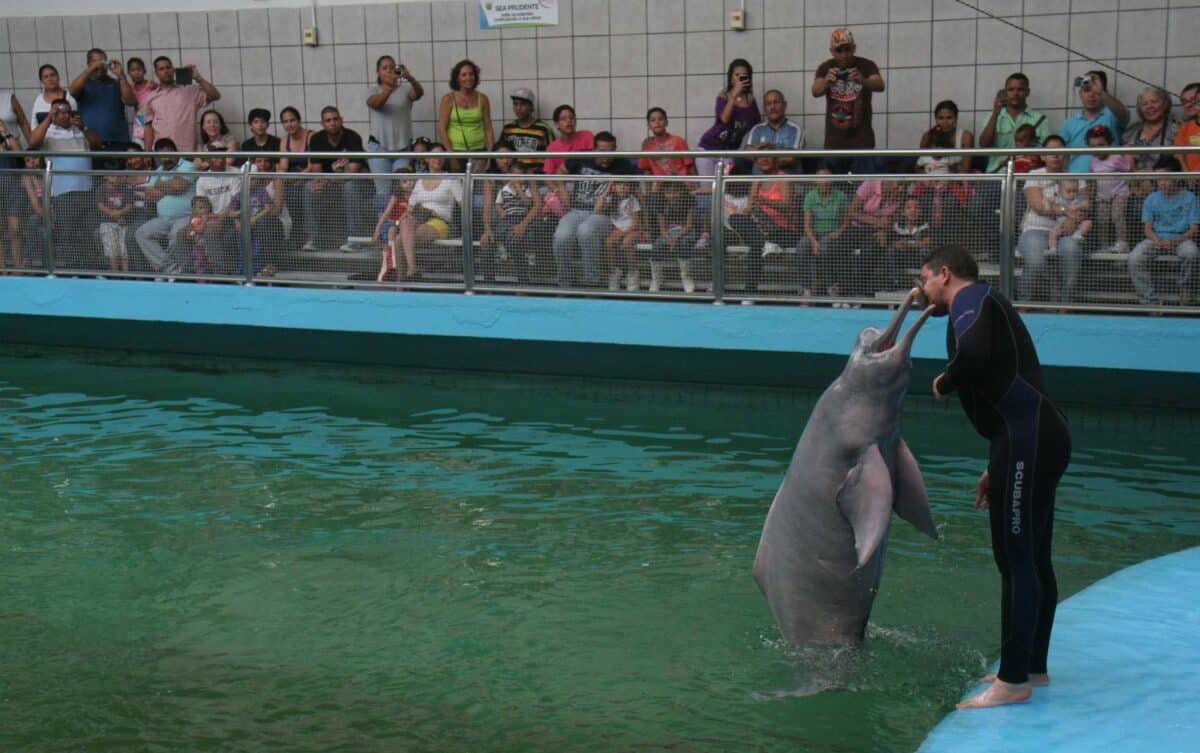
Eco-tourism centered around pink river dolphins presents both opportunities and challenges for conservation efforts. When properly managed, dolphin-watching experiences create economic incentives for local communities to protect rather than hunt these animals, transforming them into valuable living resources. Several successful community-based tourism initiatives have created sustainable livelihoods while raising awareness about conservation issues. However, poorly regulated tourism brings significant risks. Inappropriate boat approaches can disrupt feeding, resting, and nursing behaviors, causing chronic stress to dolphins. In some areas, tour operators feed dolphins to attract them, altering natural behaviors and creating dangerous dependencies on human interaction. Recent studies indicate that high-volume tourism sites show changes in dolphin communication patterns, suggesting acoustic disturbance from boat engines. The ethical concerns extend to captive dolphin facilities that have appeared in some Amazonian cities, where animals are kept in inadequate conditions for entertainment purposes. Conservation organizations advocate for strict tourism guidelines that maintain minimum approach distances, limit daily visitation numbers, and prohibit feeding. The most successful models incorporate indigenous knowledge and community management, creating truly sustainable tourism that benefits both dolphins and local populations.
Conservation Success Stories: Turning the Tide
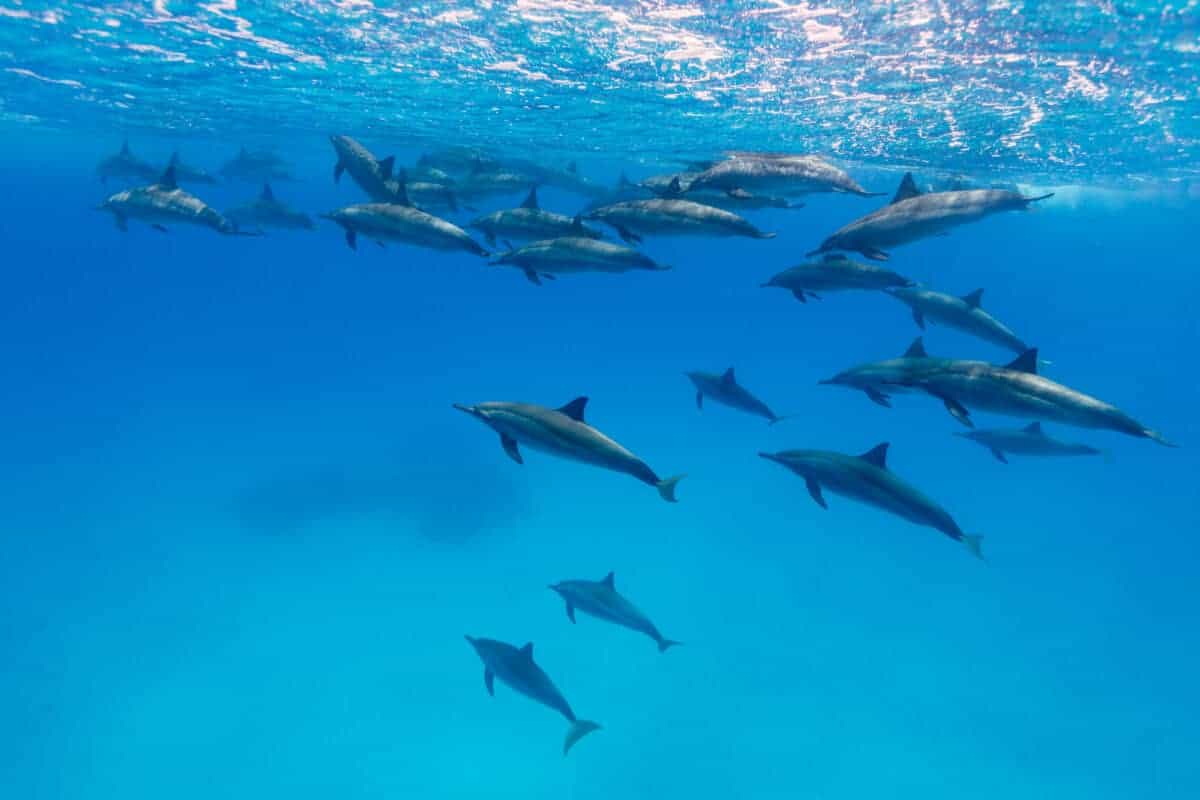
Despite the numerous threats facing pink river dolphins, targeted conservation initiatives have achieved important successes. The South American River Dolphin Initiative (SARDI), a collaborative effort across Bolivia, Brazil, Colombia, Ecuador, Peru, and Venezuela, has established standardized monitoring protocols that provide crucial population data. In Brazil’s Mamirauá Reserve, a pioneering program combining scientific research with community engagement has stabilized local dolphin populations through fishing regulation zones that reduce accidental entanglement. Colombia’s 2018 legal ban on capturing or keeping river dolphins in captivity represents a significant legislative victory. In Peru, innovative acoustic alarms attached to fishing nets have reduced dolphin bycatch by over 70% in pilot areas. Conservation technology developments include satellite-linked transmitters that weigh less than 150 grams, allowing researchers to track dolphins without impacting their behavior. Public awareness campaigns featuring the boto as a flagship species have successfully rallied support for broader Amazon conservation efforts. Perhaps most encouraging is the integration of indigenous knowledge into scientific research, creating community-based monitoring networks where local fishermen collect valuable data while serving as conservation ambassadors. These success stories demonstrate that with sustained, collaborative efforts, the decline of pink river dolphin populations can be reversed.
The fate of the Amazon’s pink river dolphins stands at a critical juncture, with their future inextricably linked to the broader ecological health of the world’s largest rainforest ecosystem. As sentinel species, these dolphins serve as living indicators of river health, with their presence signaling functional, balanced aquatic environments. Conservation scientists increasingly recognize that protecting river dolphins requires holistic watershed management that addresses not just direct threats but the entire connected landscape of rivers, tributaries, and surrounding forests. The latest population models suggest that with comprehensive protection measures, dolphin numbers could stabilize within a decade and begin recovery by mid-century. Climate change presents perhaps the greatest unknown variable, with altered rainfall patterns potentially transforming the flooding cycles that dolphins depend upon. Yet there is reason for cautious optimism in the growing recognition among governments, conservation organizations, and local communities that these iconic animals represent an irreplaceable natural heritage worth protecting. Their preservation requires commitment across multiple fronts – from addressing immediate threats like fishing gear entanglement to long-term challenges such as hydroelectric development. If successful, conservation efforts will ensure that future generations can still witness these remarkable pink mammals gliding through the Amazon’s waters, continuing their ancient role in both ecosystem function and human cultural imagination.
- The Mystical Pink River Dolphins of the Amazon - August 12, 2025
- The World’s Most Dangerous Jellyfish - August 12, 2025
- The Tallest Dog Breed in the World Is Bigger Than a Small Horse - August 12, 2025

